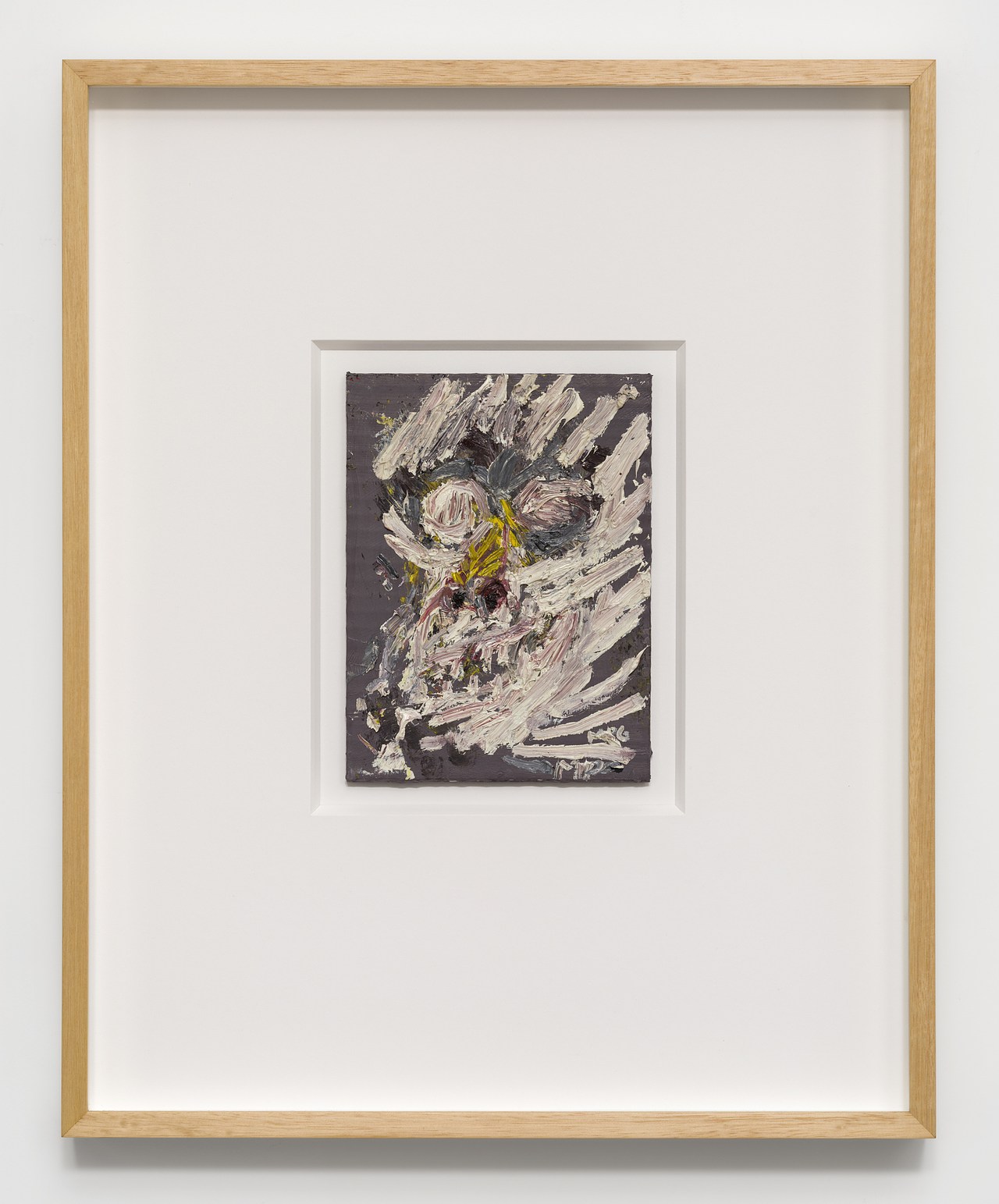Human Quarry
- Painting (Painting)
55 x 42 inches
Leslie Shows
Human Quarry is a large work on paper by Leslie Shows made of a combination of acrylic paint and collage. Both through its title and formally—through how the shapes in the composition resemble a mountain or natural formation—the piece relays us to a mineral quarry or a deep mining pit where materials are extracted. Interspersed among the block-like figures and rocky textures, we also see several human silhouettes, either cut-out, or as if they were whited out by a shining light, or lost in the shadows. There’s additional evidence of human presence: architectural features such as steps and a window, and symmetrical forms that resemble an X-ray scan or an inkblot from a Rorschach test. These references are collisions of opposing forces—positive and negative space, light and dark, presence and absence, consciousness and the subconscious. Together they comprise a complex excavation that somehow equates human experience with geological time, as if the spectral figures were layers of sediment from civilizations past.
Although at first Leslie Shows’ work might read as abstract compositions, a close inspection reveals her expanded approach to painting and the deeper connections she has forged between her practice and the realms of geology, the passing of time and the imaginary. Her works are usually large in scale and materially rich, deftly combining a lush and diverse arsenal including sand, paint, metal, fabrics, plexiglass, ink, and collage among others. Whether hung sideways in diamond-like shapes, or laden with folds, fragments and textures that stretch and drip, her work is rarely confined within the limits of a frame. A key aspect of Shows’ practice is an interest in the various ways in which we relate to the natural world. She has taken inspiration from the mineral pyrite, or iron pyrite, also known as fool’s gold; from water formations from the faces of rocks; and even from calcified mining ruins that the artist remembers from her childhood spent in Juneau, Alaska. Whether suggesting forms from nature like beehives, or emulating the textures of crystals and marble or the shapes of minerals, each piece connects us to a place, a landscape, real or imagined.
Colors:
Other related works, blended automatically

© » KADIST
Mark Grotjahn
2002This particular drawing, like many of Grotjahn’s works, presents a decentered single-point perspective...

© » KADIST
Kota Ezawa
2002The Simpson Verdict is a three-minute animation by Kota Ezawa that portrays the reading of the verdict during the OJ Simpson trial, known as the “most publicized” criminal trial in history...

© » ARTLYST
Kara Walker
Brent Sikkema, the Manhattan art dealer renowned for representing artists such as Jeffrey Gibson and Kara Walker found dead The post Brent Sikkema – Visionary Art Dealer Of Jeffrey Gibson And Kara Walker Murdered appeared first on Artlyst ....

© » KADIST
Raymond Pettibon
The five drawings included in the 101 Collection are representative of Pettibon’s characteristic cartoonish style...

© » KADIST
Wong Wai Yin
2021Drawn from the widely circulated images of protests around the world in support of women rights and racial equality, the phrase I can’t believe we are still protesting is both the title of Wong Wai Yin’s photographic series and a reference to similar messages seen on protest signages...

© » KADIST
Shahzia Sikander
2010The Last Post was inspired by Sikander’s ongoing interest in the colonial history of the sub-continent and the British opium trade with China...

© » KADIST
Jonathan Hernández
2008In line with Hernández’s interest in catastrophe, Vulnerabilia (choques) is a collection of images of shipwrecks and Vulnerabilia (naufragios) collects scenes of car crashes...

© » KADIST
Kota Ezawa
2017The Crime of Art is an animation by Kota Ezawa that appropriates scenes from various popular Hollywood films featuring the theft of artworks: a Monet painting in The Thomas Crown Affair (1999), a Rembrandt in Entrapment (1999), a Cellini in How to Steal a Million (1966), and an emerald encrusted dagger in Topkapi (1964)...

© » KADIST
Raymond Pettibon
2005The five works included in the Kadist Collection are representative of Pettibon’s complex drawings which are much more narrative than comics or cartoon...

© » KADIST
Stephen G. Rhodes
2010For his series of digital collages Excerpt (Sealed)… Rhodes appropriated multiple images from mass media and then sprayed an X on top of their glass and frame...

© » KADIST
Julian Hoeber
2011Every work in Hoeber’s 2011 series Execution Changes is titled in alphanumeric code...

© » KADIST
Yang Guangnan
2011Itch explores the relationship between technology and daily human experience with a motorized arm that extends from within the gallery’s wall, moving up and down while holding a projector that shows a desperately scratching pair of hands....

© » KADIST
Matt Lipps
2011In the series Horizons (2010), Lipps uses appropriation to riff on Modernism’s fascination with abstract form...

© » KADIST
Judy Chicago
1969Domes #1 represents a significant moment in Chicago’s career when her art began to change from a New York-influenced Abstract Expressionist style to one that reflected the pop-inflected art being made in Los Angeles...

© » KADIST
Federico Herrero
2009Federico Herrero’s energetic paintings reflect his experiences on the streets of his native San José, Costa Rica, and in the surrounding tropical landscape...

© » KADIST
Raymond Pettibon
2005The five works included in the Kadist Collection are representative of Pettibon’s complex drawings which are much more narrative than comics or cartoon...

© » KADIST
Kota Ezawa
2014Paint and Unpaint is an animation by Kota Ezawa based on a scene from a popular 1951 film by Hans Namuth featuring Jackson Pollock...



